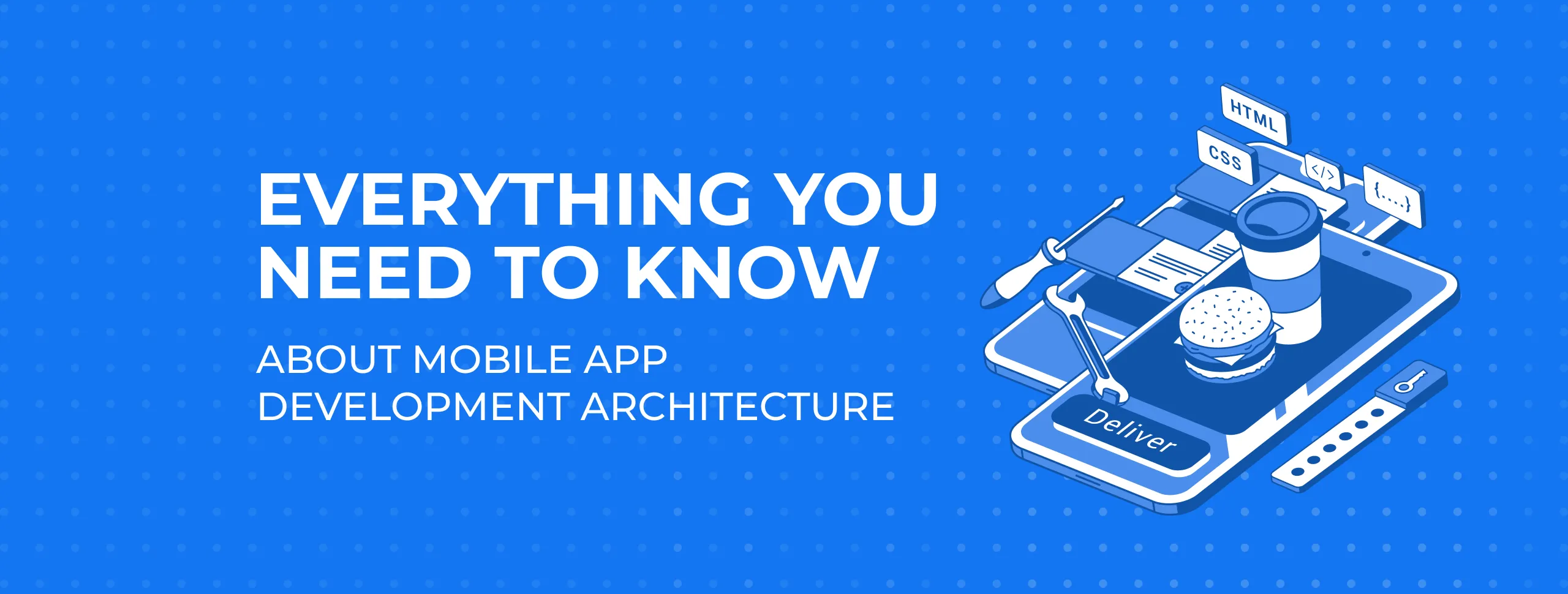
Everything You Need to Know About Mobile App Development Architecture

Mobility is a new necessity of our era. We’re accustomed to the ease of use and on-demand resources. We’re entering a phase where "anything is possible". The development of mobility lends smartphones powerful capabilities and provides fertile ground for many mobile apps. We’re witnessing rapid growth with new innovations appearing every day.
The Game Has Already Started
In addition to traditional approaches, companies are adopting mobile apps to boost their business value. This year's global mobile market revenue is reportedly expected to reach 77 billion US dollars - a laudable growth from $58 billion in 2017.
However, heavy competition means not every player can reach their goals. The main reason for failure is gaps in mobile app architecture and development.
Companies are using mobility to improve employee productivity. This has led to fierce competition among software development companies. As a result, many fall behind.
Often the reason for the failure is ignorance of mobile app development architecture, one of the founding principles of enterprise software development.
What is Mobile App Architecture?
Application architecture is a set of technologies and models for the development of fully-structured mobile programs based on industry and vendor-specific standards. As you develop the architecture of your app, you also consider programs that work on wireless devices such as smartphones and tablets..webp)
Mobile app architecture design usually consists of multiple layers, including:
- Presentation Layer - contains UI components as well as the components processing them.
- Business Layer - composed of workflows, business entities and components.
- Data layer - comprises data utilities, data access components and service agents.
Things to consider before attempting mobile app architecture development
As building a better application architecture is crucial to the success of your project, there are several things to keep in mind before you start designing your app architecture:
Determine the device type
There are different types of smartphones and it is important to evaluate the device type and its characteristics before choosing a specific app architecture. You should keep in mind the following device features:
- Screen resolution
- Screen size
- CPU Features
- Storage Space
- Memory
- Availability of the development framework
Wondering why we should determine the device type when choosing the architecture of the application? Because an app’s intended features may have some specific software and hardware requirements.
Consider the bandwidth situation
It is important to consider the web scenes in those regions where your target audience lives, such as fluctuations in internet speed, which have a negative impact on user experience. Your client may not be able to connect to the internet all the time. So, when creating a program, you should be thinking about the worst of internet conditions.
Think about power consumption and speed when choosing software and hardware protocols. Also create a caching, state management and data access mechanism that can be tuned to slow and intermittent web connections.
Set the UI
When it comes to creating a pixel-perfect UI design, you can explore your creative perspective in a unique style. However, you should always keep the interface as simple as possible so that users can interact intuitively. Also, keep in mind that a messy user interface can make your app fail.
Choose the correct navigation method
Software navigation is a crucial aspect, including front-end and back-end. When choosing a navigation strategy, you should bear in mind both your preferences and the needs of the app. This is crucial because it will have a huge impact on the user experience. Of the various navigation means available, you should analyse and select those most appropriate for your case. Some of the most popular include:
- Stacked navigation bar
- Tag driver
- Modular controller
- Single view
- Scroll view
- Gesture-based navigation
- Search driven navigation
The next question is how to make sure your application meets your target audience’s needs. For this, you need to follow specific guidelines when building your app for efficient execution in different situations.
How to maintain process flow
Any program can be divided into three different levels, as described above. Let’s look at the following guidelines at each level.
Presentation Layer
The main focus of this layer is how to present the app to the end user. When designing it, app developers must determine the correct client type for the intended infrastructure. Client deployment restrictions should also be kept in mind.
- Another prerequisite for designing this layer is choosing the correct data format and using powerful data validation techniques to protect your apps from invalid data entry.
In addition, our mobile app developers also focus on decoupling business logic from the presentation code.
Business layer
Caching, logging, authentication, exception management and security are all matters of concern. According to our developers, you need to split tasks into different categories to reduce the complexity of this layer.
- For complex rules, app policies, data transformations and validation, you must identify the set of demands separately for each of the categories.
Data Access Layer
This layer complies with the app requirements to facilitate secure data transactions. You must design this dimension so that it can be rescaled over time as business needs change.
As an experienced IT agency, Magora focus on selecting the right data access techs to create a secure and highly functional product.
You can also use table-based identity to present a simplified design structure for storing data and allow data transmission across all boundary layers. All data access functions are encapsulated in this layer, which manages all the required connections. In addition, it handles all data sources and CRUD (Create, Read, Update, and Delete) operations.
We also apply the least privileged method, thus preventing any attempt to destroy or steal data by protecting data access mechanisms.
Choosing the architecture for your mobile application

We’ve been providing our customers with software development services for more than eight years. Here’s a suggestion from our team of developers and designers to help you choose the right architecture for your program:
- If you have no budget constraints, it’s advisable to develop native programs as they offer intuitive functionality and performance.
- You can also opt for the "develop once, run anywhere" concept, but take a different approach. You can either create a modest development effort for a mobile web app or a hybrid application, or else use a multi-platform framework for cross-platform solutions and provide a richer experience while gaining access to a wide range of mobile devices.
- If your audience includes iOS and Android users and your goal is to provide the best user experience, Magora recommends the development of native applications. However, if you need to involve all other operating systems, including Windows, multi-platform development may be an economical option - though availability may be compromised.
- We can also combine native and web development to complement each other, the better to help you engage with customers and employees. While native applications offer the best user experience, web applications ensure the visibility of your business by offering customers the choice of a variety of devices.
Build Your Mobile Success
By now, you may have come to understand the importance of mobile app architecture for successful and cost-effective development that not only guarantees a perfect mobile presence but also extends your business reach.
- To set the appropriate mobile software architecture, we first need an overall picture of your business - this way we can set future goals for process multiplication and daily routine automation.
So, to provide the flexible software solution your company needs, we must begin with market research and competitor analysis.







